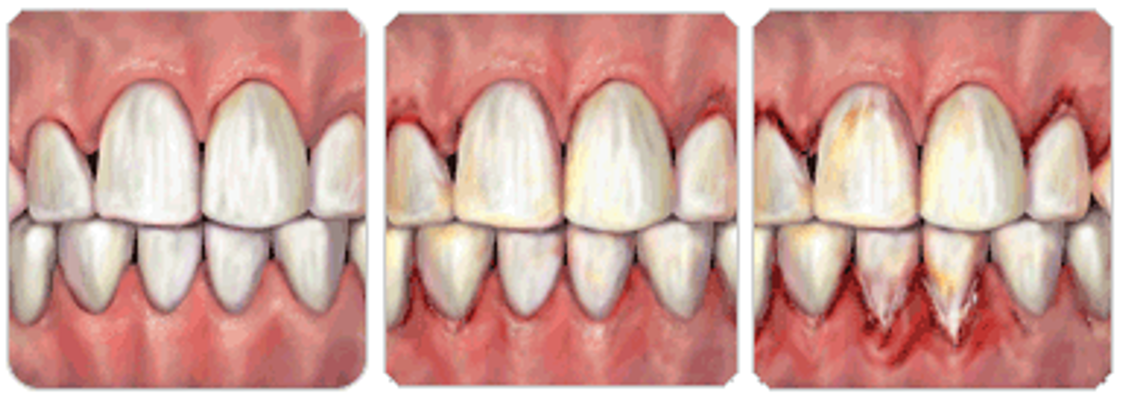Gum disease, also known as periodontitis, is very common, according to the American Academy of Periodontology, which indicates that 47 percent of Americans aged 30 and over, suffers from periodontitis.
Periodontitis is an infection of the gums caused by the buildup of bacteria that has accumulated between the teeth and gums over time. Left untreated, periodontal gum disease can lead to tooth loss.
Fortunately, there are symptoms associated with the progression of this disease which if detected, can lead to early treatment.
According to Dr. David Mugford, a Baltimore-area Periodontics and Dental Implants specialist, periodontal disease is a chronic inflammatory condition, which means gum inflammation persists for months or even years. “It can also be associated with other chronic inflammatory conditions, such as cardiovascular disease and diabetes.”
The following are the stages of periodontitis that you should be aware of to prevent the disease from spreading.
Inflammation of the Gums
Gum disease starts out initially with inflammation of the gums surrounding the teeth, which is also known as gingivitis. Another tell-tale sign of the initial stages of periodontitis is also bleeding gums that occurs when one brushes their teeth and is an indicator of gingivitis.
Early Periodontal Disease
During the initial stages of periodontitis, the gums will also pull away or recede, leaving small gaps between the teeth and gums. This stage is also easily noticeable and can be treated, according to Dr. Mugford. “When the gums begin to recede, these pockets or gaps that are created can house harmful bacteria. While the immune system kicks in to fight the buildup of bacteria, the bleeding tends to continue along with some possible bone loss.”
Moderate Periodontal Disease
If the condition is left untreated, it spreads further to moderate periodontal disease. During this stage, the person may experience pain and bleeding around the teeth as the gums continue to recede. During this stage, the teeth also begin to loosen because of the receding gums.
Advanced Periodontal Disease
During the advanced stages of periodontal disease, you will experience the deterioration of the connective tissue that holds the teeth in place. Once the gums are loosened and the bone and other connective tissue are left weakened, the tooth begins to loosen. This is the stage where teeth begin to fall, and patients experience severe pain and foul breath. In severe cases, the bacteria can also enter into the bloodstream, resulting in further complications.
Get More Information
At The Mugford Center, Dr. Mugford and staff are always available to answer all of the questions that you may have about the stages of periodontitis and your options for top-notch care. So, don’t wait. The Mugford Center offers flexible scheduling options and can assist with your periodontal surgery, including LANAP options, and dental implant questions. Call The Mugford Center for Periodontics & Dental Implants today at (410) 260-0790.

